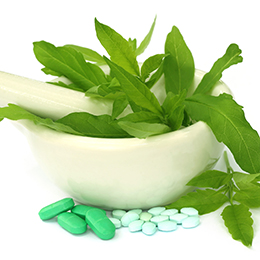Laura Mahecha, our healthcare industry manager, recently attended CHPA’s President’s Forum in Malvern, PA, to speak about the dynamic adjacent OTC categories that make a mark on traditional OTCs. One of these categories is natural OTCs, which refers to non-drug, non-monograph, plant- or supplement-based, or homeopathic products that often make claims of support, prevention, maintenance, and/or treatment of minor conditions or ailments. Such products are increasingly popular among consumers and have posted healthy growth recently.
In fact, sales of natural OTCs are up 11.4% compared with 4.2% growth for traditional OTCs over the same timeframe, according to the last published editions of Kline’s Nonprescription Drugs USA and Natural OTCs: Impact of Non-drug Products on the U.S. OTC Market. Natural products offering enhanced immunity for cough/cold and digestive immunity account for more than two-thirds of the natural OTC market, but products touting improved brain health/memory are growing at the fastest pace among natural OTC brands.
The majority of consumers we surveyed in our analysis reported using natural OTCs both preventively and to help ease symptoms when they are sick. Most of them are willing to pay a premium price if the product’s efficacy and quality prevails. Brands such as EmergenC (Pfizer), Zarbee’s (Zarbee’s Naturals), Culturelle (iHealth/DSM), MegaRed (Reckitt Benckiser), Airborne (Reckitt Benckiser), and Ultimate Flora (Renew Life Formulas) are popular among consumers, and annual sales of these brands range from $20 million to over $100 million.
Once sold primarily at specialty retailers like Whole Foods, Sprouts, or Pharmaca, natural OTC brands have been increasingly mainstreamed into mass retailers like drugs stores and mass merchandisers. In early 2016, Target, one of the leading mass merchandisers, brings its “Made to Matter” campaign to the next level by challenging its partners to innovate their natural products based on a specific set of standards that ensures they truly make a difference. Other retailers are also expected to follow Target’s footsteps to create special natural sections.
As long as consumers’ interest and demand for natural OTCs exists, retailers will continue to devote shelf space to these brands, often right next to traditional OTCs in the same categories, such as DayQuil (Procter & Gamble), Robitussin (Pfizer), Alka-Seltzer (Bayer Group), and Zantac (Sanofi). Based on the ways consumers are using natural OTCs, it seems that both natural and traditional OTCs can safely coexist on the market. However, traditional OTC marketers need to keep an eye on such products and stay ahead of their relative impacts on the OTC market.
To learn more about the various opportunities in the natural OTCs market, please refer to our Natural OTCs: Impact of Non-drug Products on the U.S. OTC Market study, which is an in-depth analysis of this market’s size, consumer perceptions, and company profiles. In addition, the new edition of our legendary Nonprescription Drugs USA report provides timely insights and solid data across 30 categories and hundreds of brands in the OTC space.
Watch out for a second blog on this important topic that will cover the impact of flourishing pain management and self-care devices on traditional OTCs.

